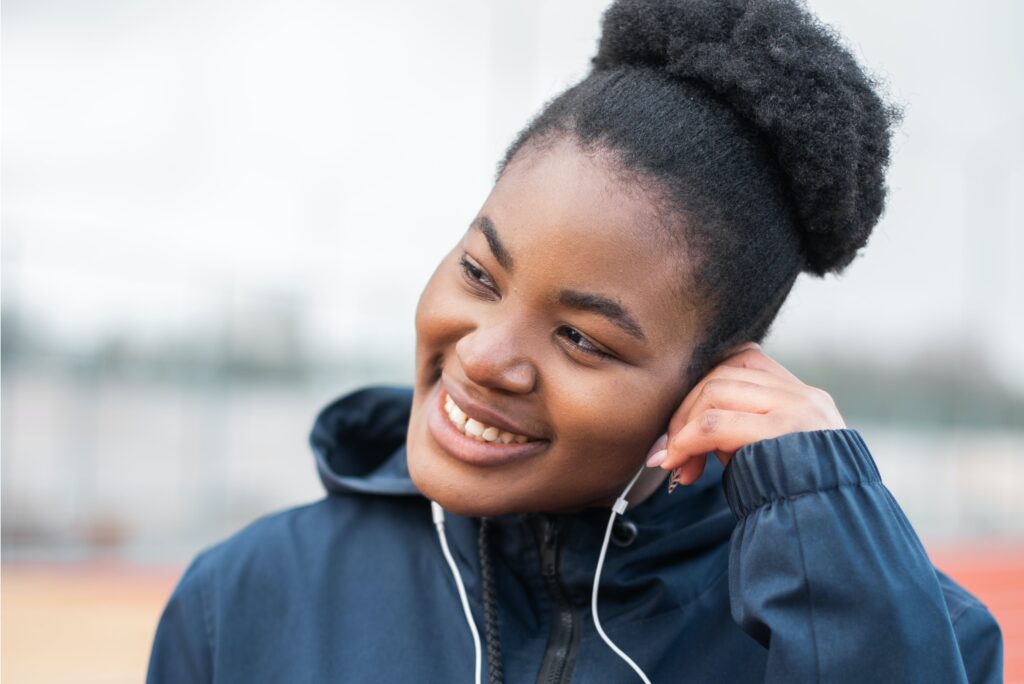
What Is Intensive Listening, and How Does It Differ from Extensive Listening?
All language students know how crucial listening practice is to their studies.
But did you know that there are different types of listening practice that focus on different skills?
To maximize this exercise, you need to master both “intensive listening” and “extensive listening.”
So what exactly are those two and how do you do them? Let’s find out.
Contents
- What’s Intensive Listening?
- Apps for Intensive Listening Practice
- What’s Extensive Listening?
- Apps for Extensive Listening Practice
Download: This blog post is available as a convenient and portable PDF that you can take anywhere. Click here to get a copy. (Download)
What’s Intensive Listening?
Intensive listening involves focused listening exercises that make use of short audio files (spanning a few minutes or so) to help you master pronunciation, grammar and vocabulary. At this stage, parsing out the overall meaning of what you’re listening to isn’t too important.
Because you’re focused on the basics of your target language, this method of listening practice helps you create a more solid groundwork for language acquisition that you can build on over time. As a result, it’s particularly useful for beginning and intermediate students.
Apps for Intensive Listening Practice
Duolingo
Price: Free (with in-app purchases)
Duolingo is one of those websites that feature a ton of brief audio activities, which force you to focus on the grammar and vocabulary you’ve just learned. If the audio is giving you trouble, no problem: there are also text versions of the abovementioned activities.
In case you want to learn more about Duolingo, here’s a complete review on it and how it compares to similar apps like Babbel, Memrise and Rosetta Stone.
Google Translate
Price: Free
This is arguably the most well-known free translation app on the web. Not only can it translate the text you type or paste into the left column, but it can also give you the pronunciation of both the original text and its translation. Because the translator has a 5,000 character limit, you can only translate small blocks of text at a time.
Also, it shows you the type of word you’re translating (whether it’s an adjective, verb, etc.), plus related words and short information about those related words. Just be aware that, since the translations are machine-generated, there may be errors or inaccuracies, so you’ll want to double-check what Google Translate produces with your language tutor or language exchange partner.
LingoClip
Price: Free (with in-app purchases)
LingoClip (formerly LyricsTraining) offers brief music videos with exercises. All you have to do is choose a difficulty level, and fill in the blanked out words you see on the app.
To make the most of LingoClip for listening practice, pay careful attention to the lyrics and how they work together. Note the structure of each phrase. You can also use this app for extensive listening, which we’re going to talk about in the next section.
FluentU
Price: See pricing page here
FluentU is a fun, flexible and complete option that you can use for listening practice. Each video is captioned and the captions are annotated, giving you easy access to any word’s definition, example sentences and an associated image.
If you want to see how a word is used in other videos, you can simply click that word. Since FluentU provides you with information on vocabulary and form, it’s excellent for intensive listening practice.
Plus, FluentU also offers an innovative “learn mode” that provides additional intensive listening practice. Learn mode combines videos, example sentences and pictures into exercises and flashcards that help you focus on a word’s meaning and usage.
Use FluentU online or download the FluentU app for iOS or Android devices.
What’s Extensive Listening?
Extensive listening is essentially the opposite of intensive listening.
Here, you focus on longer audio files that can span anywhere from 30 minutes to several hours long. The objective of extensive listening is to understand the audio as a whole, rather than focus on the finer points like vocabulary, grammar, etc.
As a result, this type of listening helps you understand spoken language in real-world contexts. This is particularly important for intermediate and advanced students looking to transition from academic understanding of the language toward full fluency.
Apps for Extensive Listening Practice
Audible
Price: Free trial available (see pricing page here)
Audiobooks are excellent for extensive listening practice, because their hours-long length forces you to try to parse out the overall themes of the book rather than get overwhelmed by all the tiny details. Audible provides a wide array of options in languages such as Spanish, French, German, Italian, Russian and Portuguese. No matter your level, you’re bound to find something you’ll like on here.
Beginners might do best with children’s books, which have a more limited vocabulary, while intermediate students might find short stories more suitable for their language learning needs. Of course, advanced students can dive into any audiobook that appeals to them, since they’re already the closest to native-level fluency. For instance, a beginning German student might try the children’s book “Der zweiköpfige Drache” (“The Two-headed Dragon”), while an advanced Spanish student might enjoy a gripping novel like “El Silencio de la Ciudad Blanca” (“The Silence of the White City”).
As you’ve seen, intensive and extensive listening focus on very different skills. While the former builds your general foundation, the latter focuses on training you to apply what you’ve learned in a real-world context.
Pairing intensive and extensive listening will make your language skills as round and meaningful as a perfect pizza.
Download: This blog post is available as a convenient and portable PDF that you can take anywhere. Click here to get a copy. (Download)







